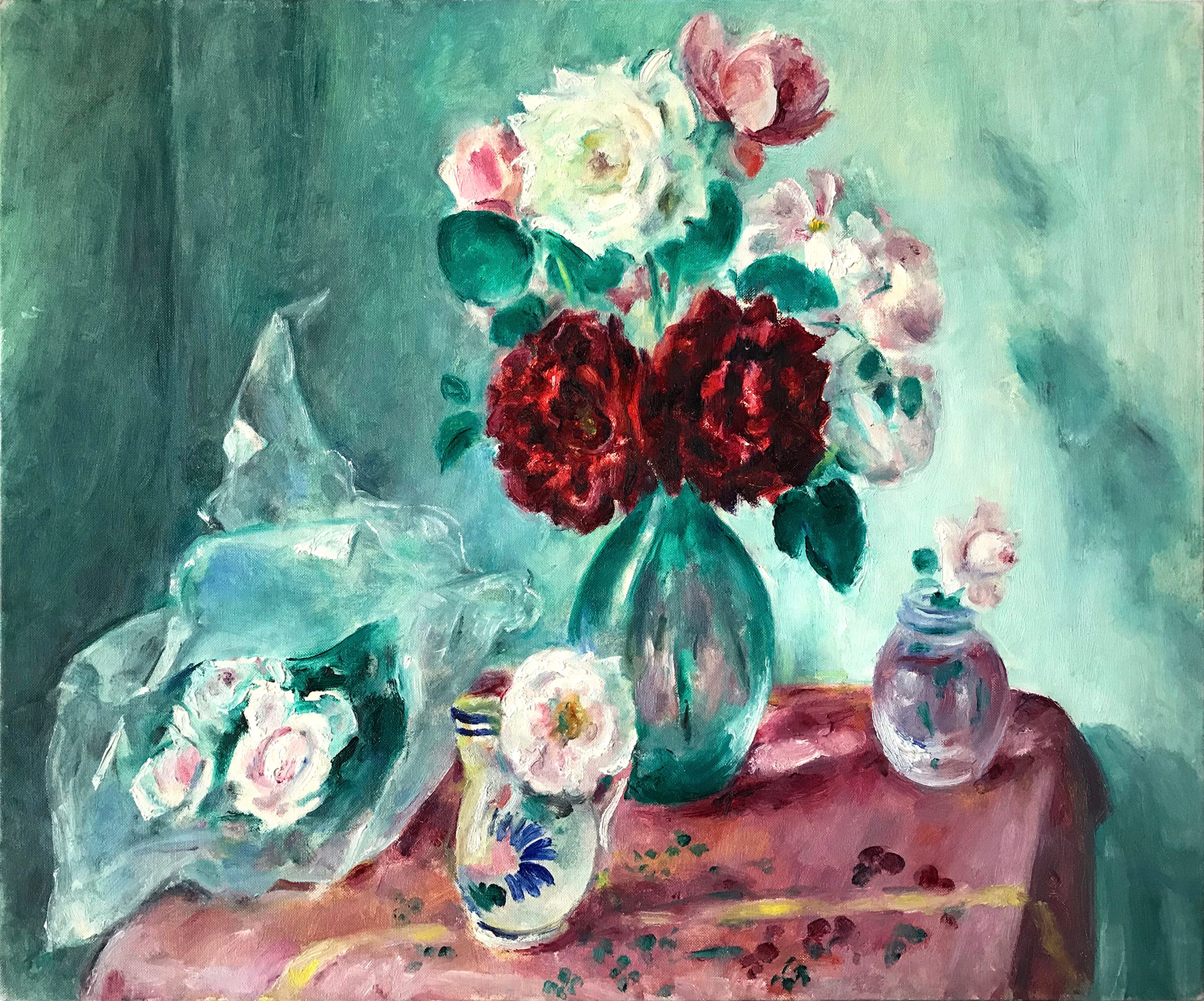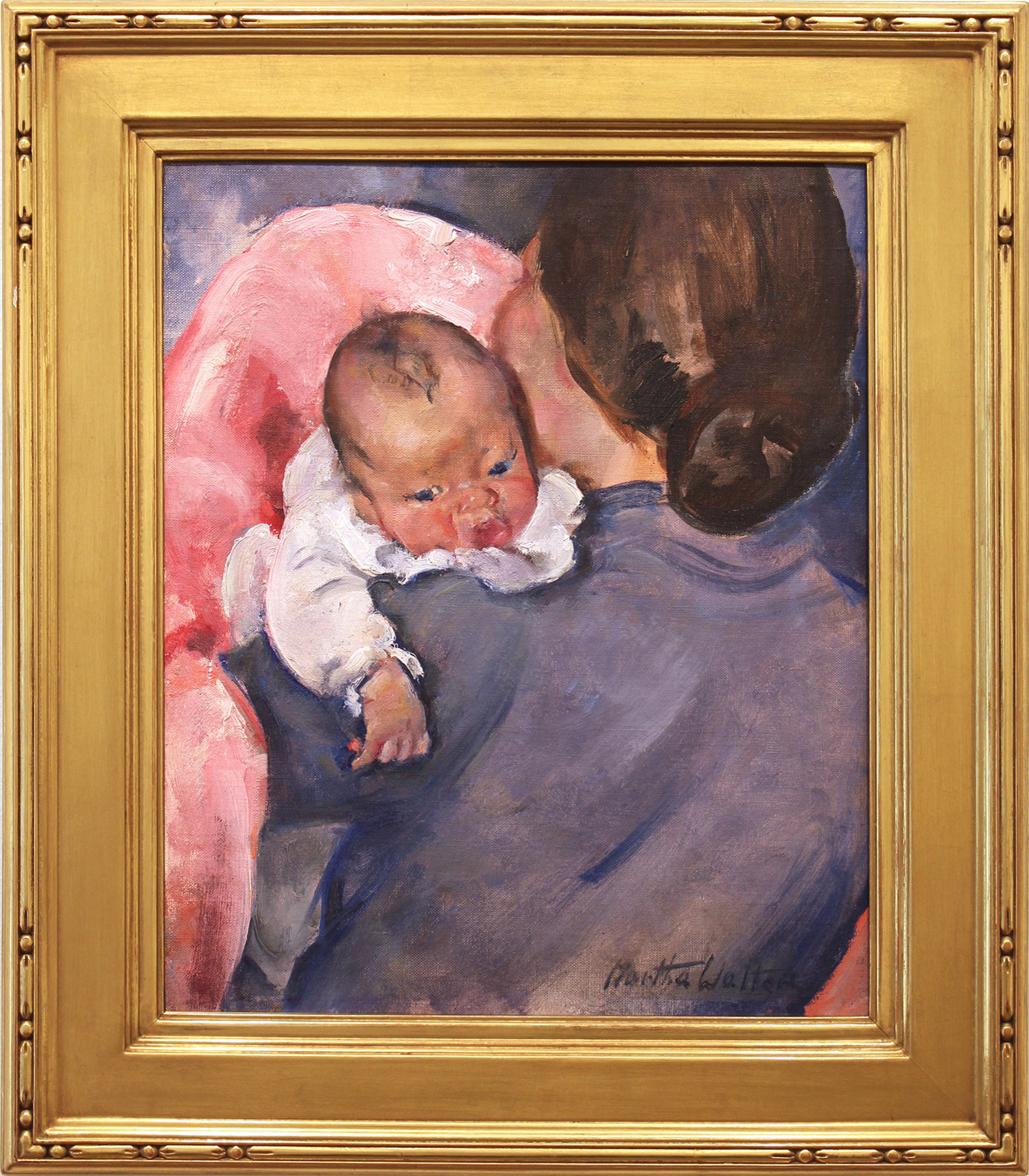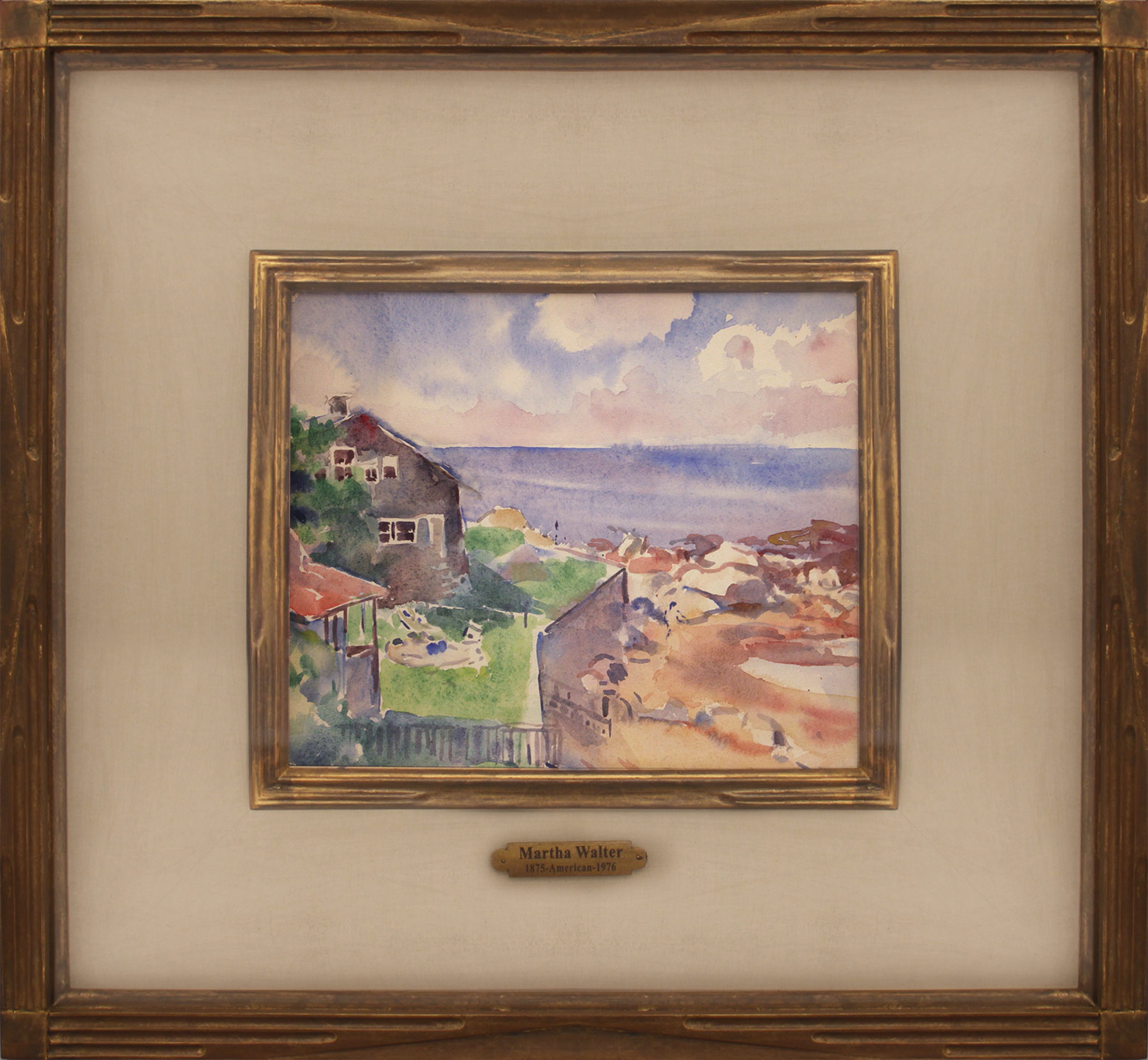Martha Walter
Martha Walter was born on March 19, 1875 in Philadelphia, Pennsylvania. Walter is a well-known American Impressionist painter who benefitted from an excellent arts education. She attended Girls High School from 1895 to 1898, Walter studied at the Pennsylvania Museum & School of Industrial Art, now The University of the Arts College of Art and Design. Then she enrolled with William Merritt Chase at his summer school in Shinnecock, Long Island, followed by enrolling at the Pennsylvania Academy of Fine Arts studying under Chase’s wing. Showing on Walter's early work a very strong influence of Chase, translated in a use of rich saturated colors, combined with a very successful application of black paint. Since black was a pigment extraordinarily difficult to master and often omitted in the general course of American Impressionism. She was also one of the few American Impressionists who used black in her palette.
The Pennsylvania Academy of Fine Arts is where she was awarded the school's Toppan Prize and in 1903 she won a two-year traveling Cresson Scholarship that gave her the opportunity to go to France, where she attended the Académie de la Grande Chaumière under the tuition from Rene Menard and Lucien Simon and the Académie Julian in Paris, she also visited, Spain, Italy, and Holland. In 1909 Walter also won the school’s Mary Smith Prize from the Academy for the best painting by a resident female artist of portrait she had painted in Europe. In 1922 she was given a solo show at the Galerie Georges Petit. Seeking to explore outside of the academic structure, she established a private studio in the Rue de Bagneaux along with several other American women artists. But at the outbreak of World War I, she returned to the United States and set up a studio in Gloucester, Massachusetts. She began painting charming beach scenes in New York and Massachusetts; the fishing village of Gloucester, Coney Island, Atlantic City, and from along the French Coast provided an ideal subject for her with its bright colors and scenes of cheerful children, which have brought her national acclaim.
Walter is also known for her depictions at Ellis Island of the immigrants as they arrived in their ethnic costumes from other countries, poor children in rural Tennessee, and later, orientalist compositions of market scenes from her travels in North African cities. Though influenced by the artists of both the European and American art worlds, it could be said that she developed a unique painting style. Her training with Chase is evident in the saturated colors and plein-air subject matter in her early Impressionist work with bold dashing brush strokes in conjunction with total color control and well-organized composition. Her painting captured the animation of the city and the light and color of seashore scenes.
Walter lived a charmed life keeping addresses in New York City, suburban Philadelphia, and Gloucester while continuing to visit Paris frequently traveling abroad, capturing in oil and watercolor a wealth of landscapes and cultures across the globe. Her outdoor scenes, both of city and country life, were vividly colored and somewhat abstracted. The palette changed according to the setting, but Walter’s strong, well-chosen colors were continually alluring. Her loose rendering of form gives the work an abstract quality, and the quick brushstrokes reinforce the sense of fun and vitality. Eventually, she took up a teaching position at the New York School of Art, run by her old teacher William Merritt Chase. After 1945, Martha spent most of her time in Huntingdon Valley and Glenside, Pennsylvania, where she enjoyed painting flowers from her garden.
Walter’s works can be found in the collections of the Pennsylvania Academy of the Fine Arts, The Detroit Institute of Arts, the Art Institute of Chicago, the Philadelphia Museum of Art, the Woodmere Art Museum, the Cheekwood Museum in Tennessee, the Toledo Museum of Art, the Milwaukee Art Museum, in France the Terra Museum at Giverny and the Musee d' Orsay in Paris, and the Musee Du Luxembourg, among others. She never married, and in her later years, she preferred not to be disturbed by galleries and museums. Although well advanced in years, Martha Walter lived to the age of one hundred and one and continued to paint until a few years before she died in January, 1976 in Gloucester, Massachusetts.











